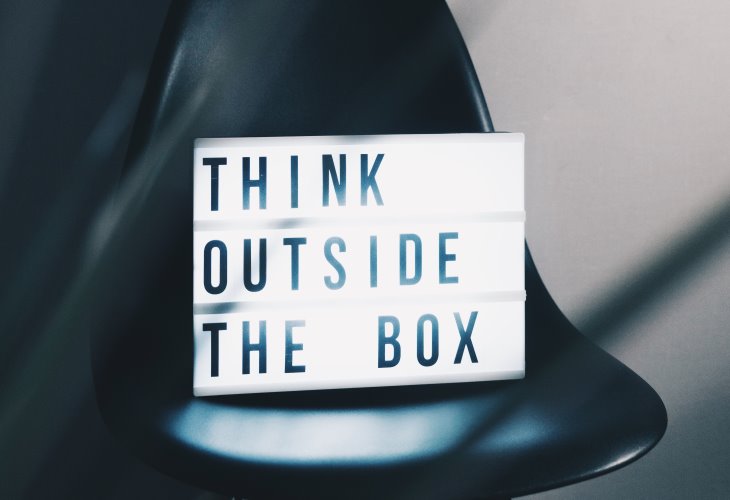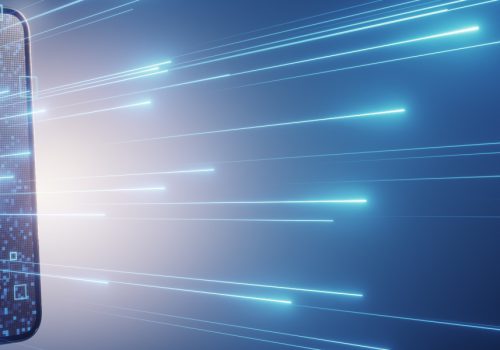‘’Design creates culture. Culture shapes values. Values determine the future.’’ – Robert L. Peters
Realizing the advantages of design and visual marketing is essential in understanding the psychological learning processes of consumer towards effective visual marketing strategies. The internet has become an advanced advertising platform for digital communication marketers to generate visual marketing content that engages in consumer behavior on a deeper psychological level of visual learning.
The strategies implemented in today’s marketing campaigns have exponentially increased the use of visual imagery utilized in recent online digital media content. This fundamentally constructs effective visual marketing content that promotes companies’ advertised products, services, and brand culture, to enlarge their presence in the marketing industry. The strategies used for generating consumer engagement through visual content and maintaining brand recognition have changed. Graphic designers no longer have only the responsibility of being artists, but also educated psychologists in the field of consumer behavior. The age of visual learning has arrived and surpassed our previous education system of consuming information from listening and reading. For that reason, the time has come for visual marketers and graphic designers to employ these visual strategies, in order to effectively promote their brand and engage in consumer digital behavior. The primary intention of this article is to provide you with a valuable insight towards how consumers psychologically process visual data and effectively teach you how to implement marketing design strategies to increase the recognition of your brand.
As Lindon Leader, the creator of the award-winning FedEx logo once said ‘’I strive for two things in design: simplicity and clarity’’. Well, that’s exactly how we’re going to break it down for you in this article.
A Strategic Investment in Design
Is a strategic investment in design worth contending for? Well, it seems to be the case, as a research study conducted by Venngage, surveyed 500 online marketers about their marketing strategies in 2018, reporting that 56% of marketers used visuals in more than 91% of their published content and that 71% of graphic designers spent five hours each week, creating visuals for marketing content. This research statistic primarily indicates that visual marketing has become a necessity and an obligation for digital marketing strategies. Ideally, because the optimization of consumer engagement has proven to be more effective through visual design content than plain descriptive text published on social media content. The strategic value of design spending has notably increased since the prioritization of generating visual marketing content. The reason behind this is because marketers understand how brand recognition works and are competent enough to continuously keep exposing and interlinking their visual content so that consumers can become regularly engaged with their products promotions. A study by The University of Minnesota reported that human beings are capable of comprehending a sense of a visual scene in less than 1/10 of a second. This additional piece of evidence further justifies why the companies are investing more time and money, and are also dedicating a bigger portion of their marketing strategies to visual content. This also happens because strategies concerning digital marketing rely heavily on social media as a major networking platform, in order to bring about consumer engagement and also understand consumer behavior and responses to campaigns. Now, imagine what the psychological effect and integration of visual content could achieve when exposed to the online digital consumer in today’s modern society.

Psychology of Visual Learning
The age of visual learning has arrived and the focus on consumer behavior revealed its capabilities as being the highest form of cognition, as the fastest data processing method to absorb and decode information. Design platforms such as graphic interfaces made up of photos, illustrations, charts, maps, diagrams from infographics and videos have fundamentally replaced text-based information in regards to effective marketing strategies. This is because psychologically, visual design content has primarily become the leading platform that effortlessly reduces the time spent, for consumers to comprehend the information exposed on social media. This is because the engagement of our behavior towards visual marketing content has proven to break down complex information more efficiently when psychologically processing data that derives from visual imagery rather than text-based content or aural listening. Statistics reported by 3M Meeting Network stated that content with visuals get 94% more total views and are psychologically processed 60,000 times faster than text or sound. The enormous amount of social media content that can be found in today’s social media channels is meaningless and hardly digestible to the consumers’ eyes if it does not include visual content. So, prioritize the effectiveness of the design and always have a clear view of the implications that your visual marketing content will have. Misinformed visual depictions can deviate or confuse consumers about the significance of your content.
Stanford University’s Robert E. Horn, explained that ‘’Visual language has the potential for increasing ‘human bandwidth’—the capacity to take in, comprehend, and more efficiently synthesize large amounts of new information.”
Crossing Boundaries with Symbols
Iconic brand symbols have visually changed the way consumers perceive brands. They have become adopted as a primary communication device of marketing brands for consumer engagement. So what makes them so effective? A study conducted in 2006 Phillip J Holcomb and Johnathan Grainger, On the Time Course of Visual Word Recognition, maintains that the human brain during cognitive processes is capable of visually processing a symbol in less than 150 milliseconds and additionally requires an extra 100 milliseconds to attach a meaning to it. This research statistic primarily indicates that the psychological processing time spent to decode symbols is remarkably efficient in regards to visually comprehending the appearance of a symbol and extracting contextual information behind the meaning of its design. In marketing terms, this means that visual symbols from brands are nonverbal representations that precede verbal symbols, in terms of engaging the consumer. Ideally, a marketing symbol possesses the graphic features to immediately reveal its identity, based solely on its visual presence. However, text is a stimulus that needs effortful processing. For that reason, each letter represents a symbol, and the brain must decode each symbol in order to comprehend its message. A strong example of symbol usage in modern marketing brands is the app market. This is because app designers have embraced icons to represent their brands symbolically on mobile devices, due to the limited room conveyed in app stores. This small, yet functional style of symbol development is visually effective at identifying the brand, whilst engaging the consumer and helping the navigation of his/her interests simultaneously.
Essentially, symbols are an emotive communication device that is highly effective in a competitive, information-rich market place. Symbols must not be confused with logos; while logos are crafted to present the company in an attractive and functional way, symbols enhance the economic value of the respective corporation.
‘’Symbolism exists to adorn and enrich, not to create an artificial sense of profundity.’’ – Stephen King
Stimulating Consumer Emotions
The stimulation of consumer emotions in regards to the engagement of visual marketing content is a behavioral challenge that requires the visual encouragement of captivating design elements and color coordination, which engages consumers on a cognitively emotional and imaginative level about your marketing brands. This psychological impulse of cognition is stimulated by visual marketing content that possesses information about the company’s brand. However, this information perceived by consumers is not constructed by marketing designers but created by the characteristics of your brand’s reputation and public recognition which is built from your consumer’s experiences. The designer’s only responsibility in this case, is to create a visually engaging marketing design for consumers, which embodies the brand’s identity and psychologically connects to them, through an emotional stimulation of their previous experiences with your product, core values, and services. A study by Paul Martin Lester about visual communication found that consumers can retain only 10 to 20% of the information they read or hear about; however, once that information is paired with visual elements, the information retained suddenly goes up to 65%. This research demonstrates how the psychological stimulation of visual imagery is capable of preserving and reinforcing the consumer’s personal experiences about a company’s brand, and continually allowing visual marketing strategies to psychologically reignite and remind consumers about the represented brand.

As Anne Morrow Lindbergh, aviator and acclaimed author would say: ‘’Good conversation is as stimulating as black coffee, and just as hard to sleep after.’’
Implications of Design and Visual Marketing
Realizing and implementing effective strategies of design and visual marketing requires a complex process of comprehending the visual satisfaction that the consumers get, while strategically reinforcing a brand’s identity through effective visual marketing content. Digital communications marketing has become the most significant professional platform from which marketers can engage with consumers more directly through visual content and advertise their products, services and brand culture productively. The technological advancement of communication channels has overwhelmed consumers with overloaded information – five times as much as in 1986. These statistics prove how the engagement of marketing content has become exceptionally challenging towards engaging digital consumer behavior. This occurs because of the immense amount of information on the internet that consumers cognitively suffer processing regularly, from marketing sources competing with your branding strategies. So prioritize your time on effectively developing your understanding of visual psychology, in order to increase consumer engagement through your marketing strategies. Since the advantages of realizing the psychological benefits of visual learning are capable of optimizing the engagement of digital consumer behavior in regards to standing out among competing brands.
Focusing on the bigger picture of visual marketing content is a graphic designer’s and marketing employee’s highest responsibility, towards embracing the practical range of cognitive skills, aesthetics, and crafts, which fundamentally create a visual language for their strategic investments. These immense factors are the nexus of the equilibrium of artistic interpretation and effective marketing design strategies.
As Aristotle would say: “The soul never thinks without an image.”










